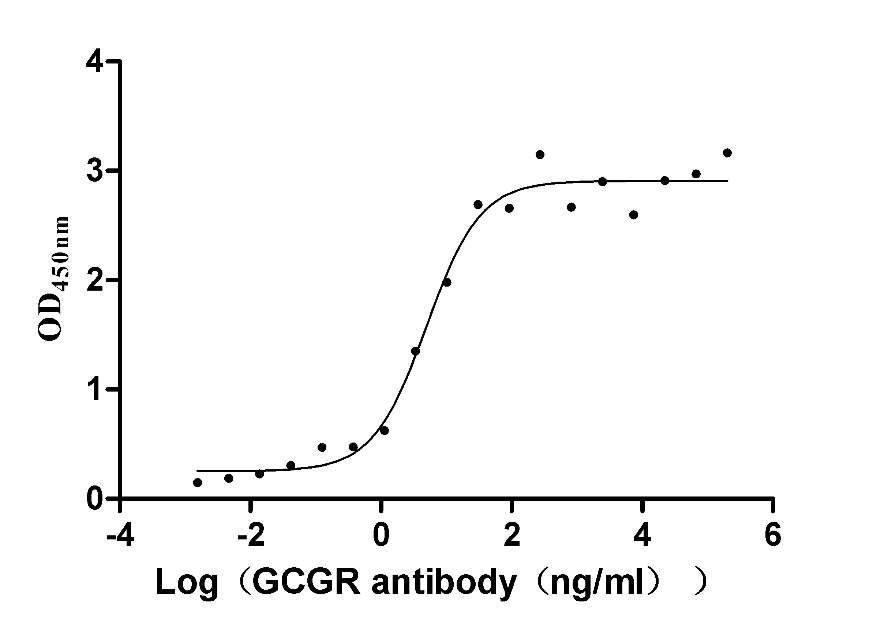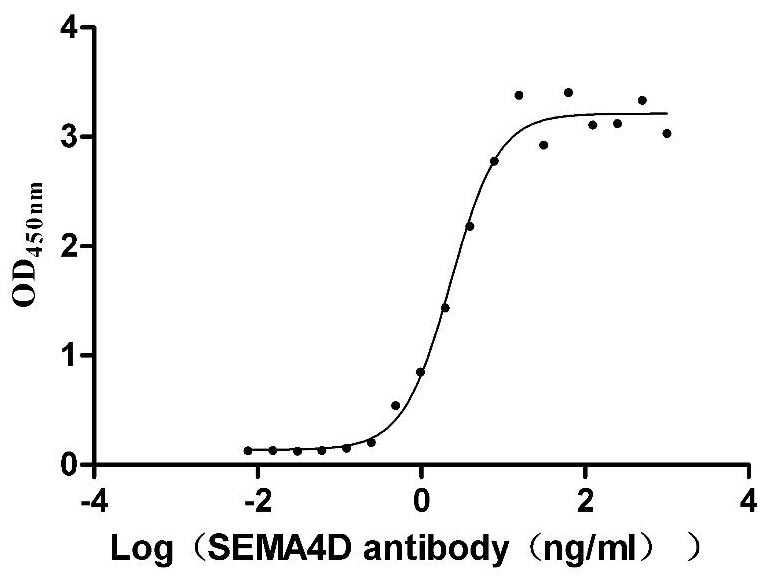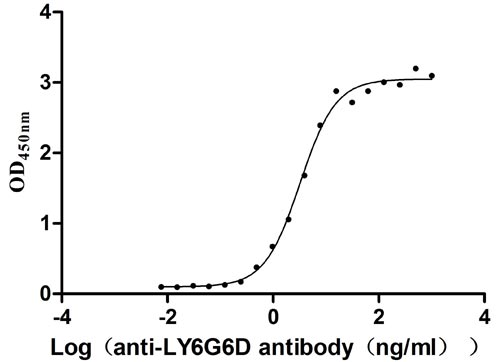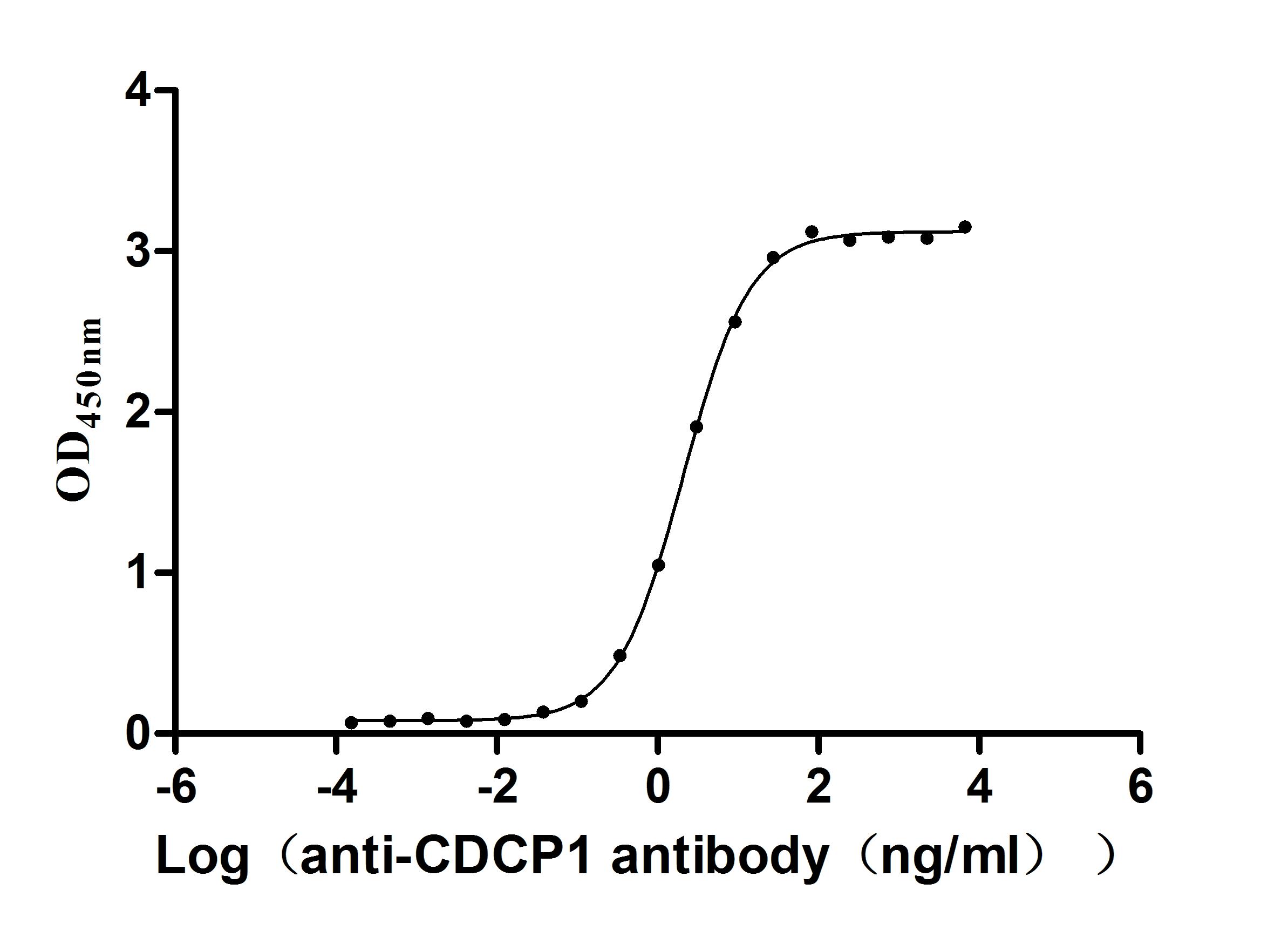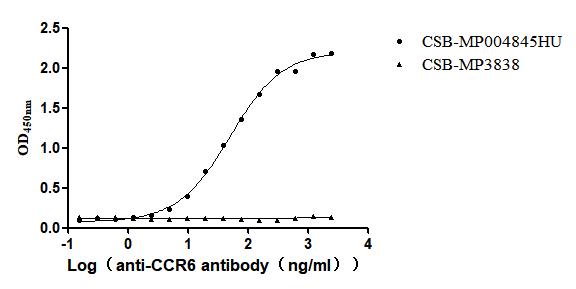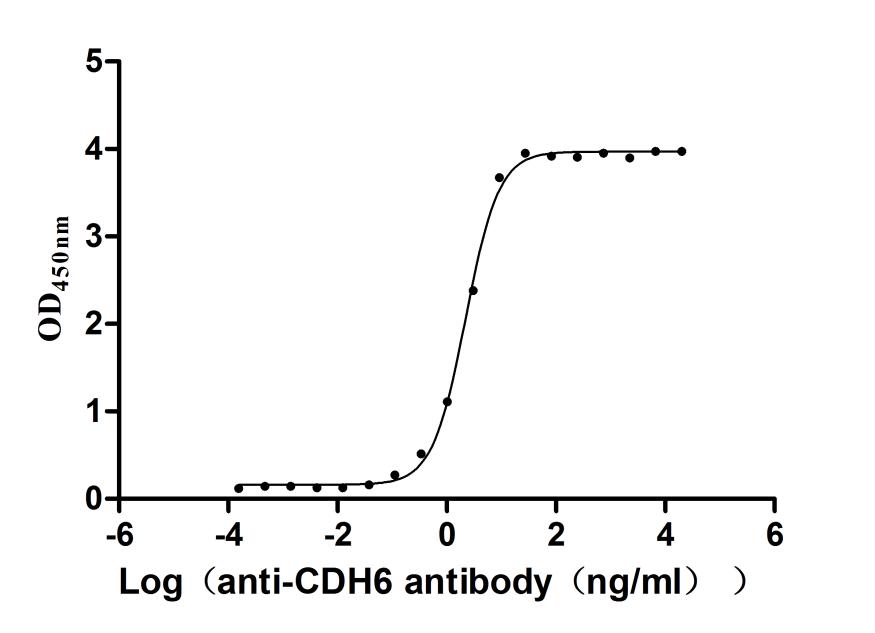Recombinant Human Dynein heavy chain 11, axonemal (DNAH11), partial
-
中文名称:人DNAH11重组蛋白
-
货号:CSB-YP822198HU
-
规格:
-
来源:Yeast
-
其他:
-
中文名称:人DNAH11重组蛋白
-
货号:CSB-EP822198HU
-
规格:
-
来源:E.coli
-
其他:
-
中文名称:人DNAH11重组蛋白
-
货号:CSB-EP822198HU-B
-
规格:
-
来源:E.coli
-
共轭:Avi-tag Biotinylated
E. coli biotin ligase (BirA) is highly specific in covalently attaching biotin to the 15 amino acid AviTag peptide. This recombinant protein was biotinylated in vivo by AviTag-BirA technology, which method is BriA catalyzes amide linkage between the biotin and the specific lysine of the AviTag.
-
其他:
-
中文名称:人DNAH11重组蛋白
-
货号:CSB-BP822198HU
-
规格:
-
来源:Baculovirus
-
其他:
-
中文名称:人DNAH11重组蛋白
-
货号:CSB-MP822198HU
-
规格:
-
来源:Mammalian cell
-
其他:
产品详情
-
纯度:>85% (SDS-PAGE)
-
基因名:DNAH11
-
Uniprot No.:
-
别名:axonemal; Axonemal beta dynein heavy chain 11; axonemal, heavy polypeptide 11; CILD7; Ciliary dynein heavy chain 11; DNAH11; DNAHBL; DNHBL; DPL11; DYH11_HUMAN; Dynein heavy chain 11; dynein, ciliary, heavy chain 11
-
种属:Homo sapiens (Human)
-
蛋白长度:Partial
-
蛋白标签:Tag type will be determined during the manufacturing process.
The tag type will be determined during production process. If you have specified tag type, please tell us and we will develop the specified tag preferentially. -
产品提供形式:Lyophilized powder
Note: We will preferentially ship the format that we have in stock, however, if you have any special requirement for the format, please remark your requirement when placing the order, we will prepare according to your demand. -
复溶:We recommend that this vial be briefly centrifuged prior to opening to bring the contents to the bottom. Please reconstitute protein in deionized sterile water to a concentration of 0.1-1.0 mg/mL.We recommend to add 5-50% of glycerol (final concentration) and aliquot for long-term storage at -20℃/-80℃. Our default final concentration of glycerol is 50%. Customers could use it as reference.
-
储存条件:Store at -20°C/-80°C upon receipt, aliquoting is necessary for mutiple use. Avoid repeated freeze-thaw cycles.
-
保质期:The shelf life is related to many factors, storage state, buffer ingredients, storage temperature and the stability of the protein itself.
Generally, the shelf life of liquid form is 6 months at -20°C/-80°C. The shelf life of lyophilized form is 12 months at -20°C/-80°C. -
货期:Delivery time may differ from different purchasing way or location, please kindly consult your local distributors for specific delivery time.Note: All of our proteins are default shipped with normal blue ice packs, if you request to ship with dry ice, please communicate with us in advance and extra fees will be charged.
-
注意事项:Repeated freezing and thawing is not recommended. Store working aliquots at 4°C for up to one week.
-
Datasheet :Please contact us to get it.
靶点详情
-
功能:Force generating protein of respiratory cilia. Produces force towards the minus ends of microtubules. Dynein has ATPase activity; the force-producing power stroke is thought to occur on release of ADP.
-
基因功能参考文献:
- Dnah11(avc)(4) did not disrupt SHF Hh signaling and caused Atrioventricular septal defects (AVSDs) only concurrently with heterotaxy, a left/right axis abnormality. In contrast, Mks1(avc)(6) disrupted SHF Hh signaling and caused AVSDs without heterotaxy.We speculate that cilia gene mutations contribute to both syndromic and non-syndromic AVSDs in humans PMID: 27340223
- DNAH11 mutations result in a subtle outer dynein arm defect in only the proximal region of respiratory cilia. PMID: 26909801
- In an epithelial cell line engineered to contain the DNAH11 target site, TALENs cleaved over 80% of the mutated DNAH11 sequence and replaced the mutated sequence with wild-type sequence in about 50% of cells. This study demonstrates that gene editing can rescue ciliary beating ex vivo, opening up new avenues for treating Primary ciliary dyskinesia. PMID: 26729821
- Mutations in DNAH11 are a common cause of PCD in patients without ciliary ultrastructural defects; thus, genetic analysis can be used to ascertain the diagnosis of PCD in this challenging group of patients. PMID: 22184204
- mutations: splice site in acceptor splice site of exon 5 and nonsense mutation located in exon 23 for DNAH11 in primary ciliary dyskinesia PMID: 20513915
- mutations in the DNAH11 gene cause one form of situs inversus totalis and most likely primary ciliary dyskinesia PMID: 12142464
- Dynein plays an unexpected role in the regulation of mitochondrial morphology in living cells, by controlling the recruitment of Drp1 to these organelles. PMID: 15304525
- a specific requirement for p150(Glued)/dynein/functional microtubules in activation of MKK3/6 and p38 MAPKs in vivo. PMID: 15375157
- These findings support the view that DNAH11 mutations indeed cause Primary ciliary dyskinesia and Kartagener syndrome, and that the reported DNAH11 nonsense mutations are associated with a normal axonemal ultrastructure. PMID: 18022865
- Two "major" genes, DNAI1 and DNAH5, underlie PCD in nearly half of the patients with ODA defects PMID: 19410201
显示更多
收起更多
-
相关疾病:Ciliary dyskinesia, primary, 7 (CILD7)
-
亚细胞定位:Cytoplasm, cytoskeleton, cilium axoneme.
-
蛋白家族:Dynein heavy chain family
-
组织特异性:Expressed in airway epithelial cells (at protein level). Not detected in spermatozoa (at protein level).
-
数据库链接:
Most popular with customers
-
Recombinant Human Glucagon receptor (GCGR), partial (Active)
Express system: Mammalian cell
Species: Homo sapiens (Human)
-
Recombinant Macaca mulatta Semaphorin-4D isoform 1 (SEMA4D), partial (Active)
Express system: Mammalian cell
Species: Macaca mulatta (Rhesus macaque)
-
Recombinant Human Lymphocyte antigen 6 complex locus protein G6d (LY6G6D) (Active)
Express system: Yeast
Species: Homo sapiens (Human)
-
Recombinant Macaca fascicularis CUB domain containing protein 1 (CDCP1), partial (Active)
Express system: Mammalian cell
Species: Macaca fascicularis (Crab-eating macaque) (Cynomolgus monkey)
-
Recombinant Human C-C chemokine receptor type 6(CCR6)-VLPs (Active)
Express system: Mammalian cell
Species: Homo sapiens (Human)
-
Recombinant Macaca fascicularis Cadherin 6(CDH6),partial (Active)
Express system: Mammalian cell
Species: Macaca fascicularis (Crab-eating macaque) (Cynomolgus monkey)


